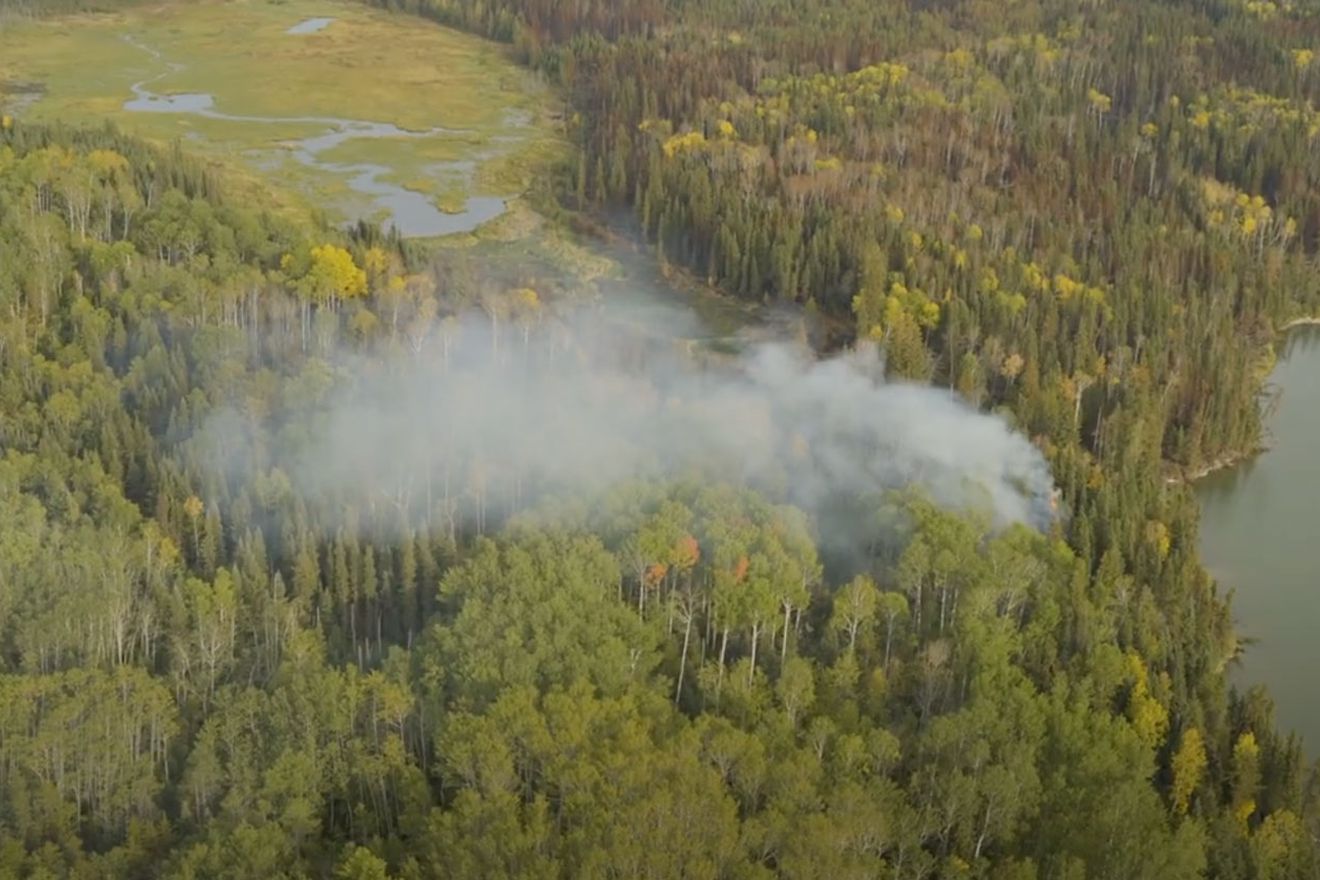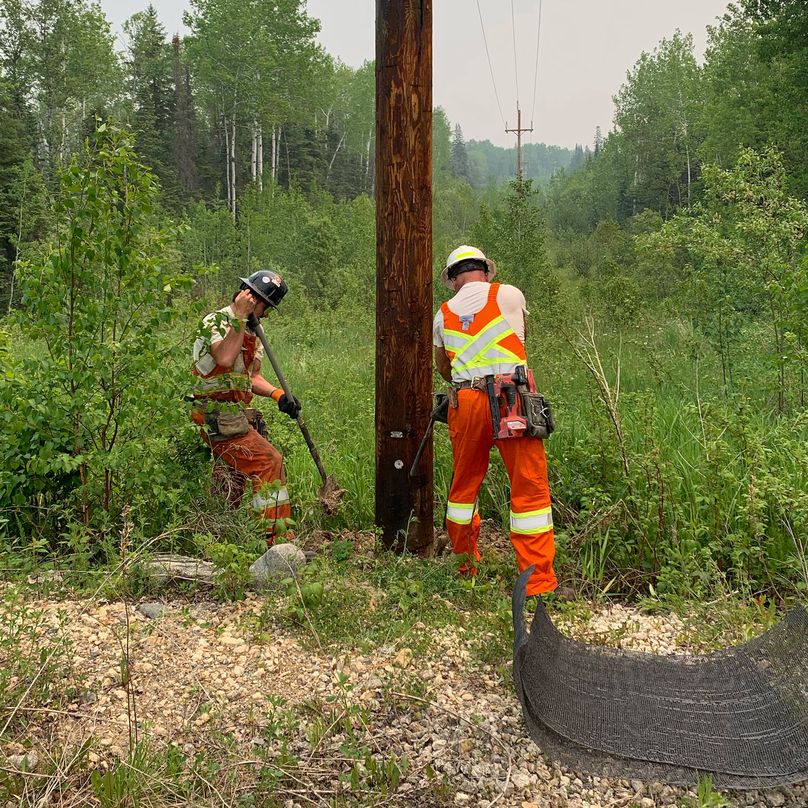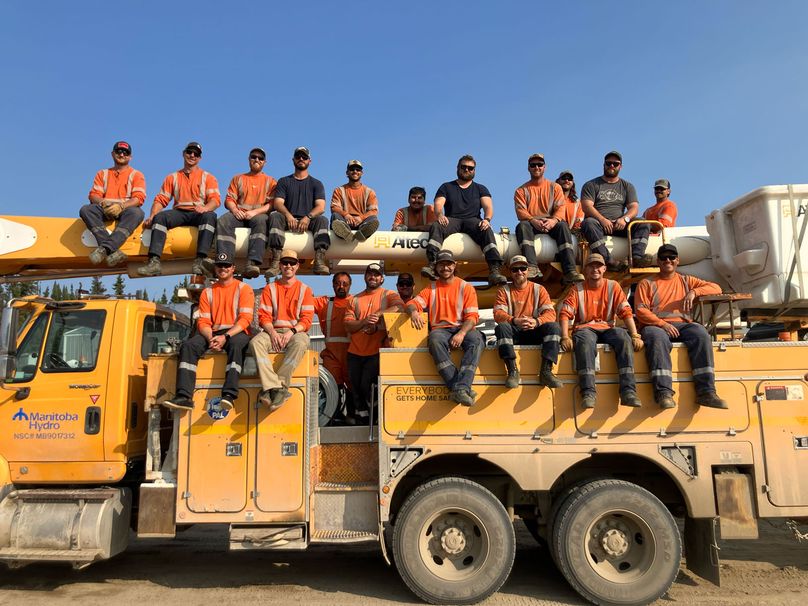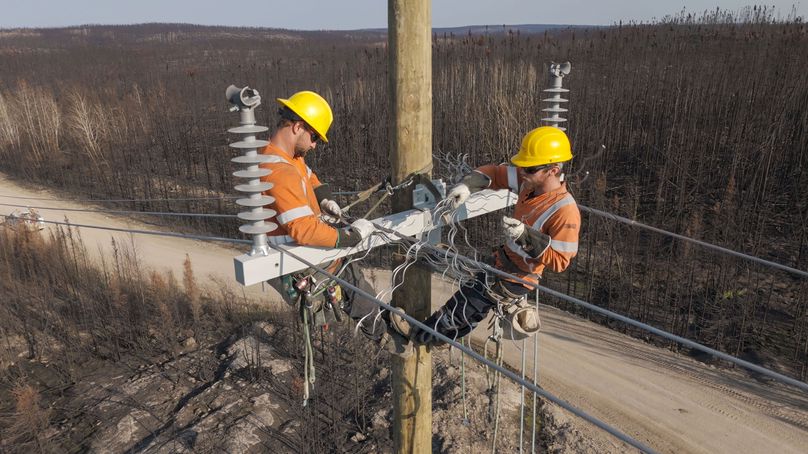We’re through the toughest days of Manitoba’s worst wildfire season on record. Power is back on in affected communities, displaced families are headed home, and we’ve repaired much of the damaged infrastructure across 2.1 million hectares of burned land — but it’s been a long and intense road to get here.
The wildfires began in April in eastern Manitoba and continued through the summer in northern parts of the province. Hydro infrastructure and facilities were threatened and damaged by fire throughout the crisis.

2025 wildfire restoration
Video: 4:47
“So many of our people were not only responding to the threat, but they were also living through it,” says Maria Neufeld, director of Manitoba Hydro’s Enterprise Emergency Centre. “We faced this challenge with a coordinated, company-wide effort prioritizing safety, protecting assets, and ultimately restoring service to thousands of customers. It was inspiring to see that dedication to keeping communities safe, while supporting each other through uncertainty.”
With fires so intense, every facet of our network was affected.
“We saw it on our transmission. We saw it on generation. We saw it on distribution. We saw it on telecommunications as well. We saw it on our system as a whole, so this is a very unique year overall,” says Brad Hay, enterprise emergency response coordinator.
Our emergency response crews deployed to at-risk facilities to work on fire suppression, installing and maintaining value protection and assisting with evacuations. Field crews, logistics teams and support staff worked with the Manitoba Wildfire Service and Office of the Fire Commissioner, local leadership and first responders.
“It was all hands on deck, helping wherever you could. Whether it was shuttling firefighters, servicing equipment, or supporting communities, everyone stepped up,” says Ryan Ault, who lives in Thompson and manages our waterways programming department.
Value protection and safety
As fires continued to threaten our infrastructure, we took extra measures to avoid damage. That included cutting back trees and other vegetation near at-risk power lines, wrapping thousands of poles in fire-resistant material and installing sprinklers to soak facilities when fires approached. The situation was fast moving and unpredictable.
“It was incredibly frustrating. You’d have crews ready to go, and then the fire would flare up or the flight would get cancelled.” says Marshall Shust, department manager for Interlake North, based in Thompson. “You’re constantly reacting to conditions that change by the hour.”

Fire mesh wrapping was extremely successful in protecting hydro poles across the province.
In support of firefighting efforts and to reduce risk to first responders, Hydro crews also de-energized lines in areas like Nopiming Provincial Park, helping to create safer conditions for emergency operations.
Restoration
Restoring power to fire damaged areas began as soon as it was safe for our crews to enter scorched areas. More than a thousand wood pole structures were damaged or destroyed, many in remote areas and difficult terrain that required helicopters, tracked vehicles and equipment to bore holes in rock.
The massive, coordinated restoration effort included hundreds of our staff and contractors and help from our mutual assistance partners at SaskPower which provided two additional specialized tracked vehicles and crews.

Crews from SaskPower joined the effort to restore power to communities across the north.
We restored power to damaged areas in eastern Manitoba by the end of June. In September we restored power to the northern communities of Mathias Colomb Cree Nation (Pukatawagan), O-Pipon-Na-Piwin Cree Nation, South Indian Lake, Leaf Rapids and Marcel Colomb First Nation/Lynn Lake two to four weeks ahead of schedule.
The total cost of the restoration is estimated at $32 million, reflecting both the scale of the damage and the scope of the mobilization required to bring power back to these communities safely and efficiently.




